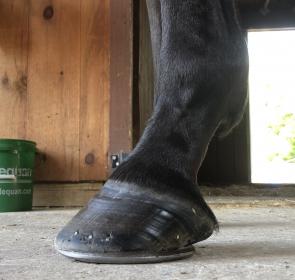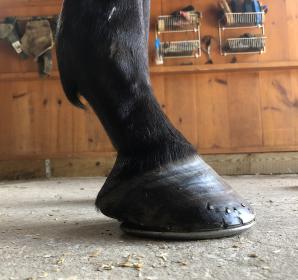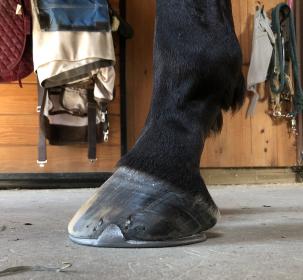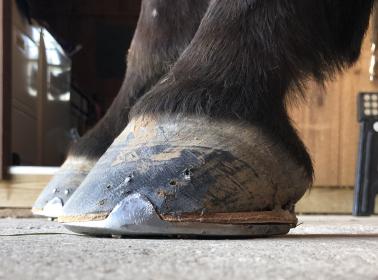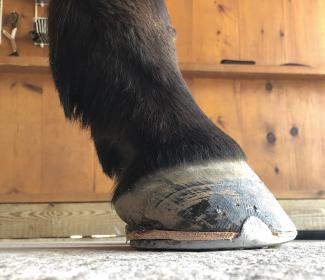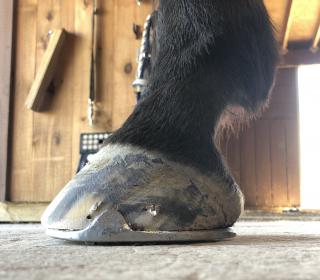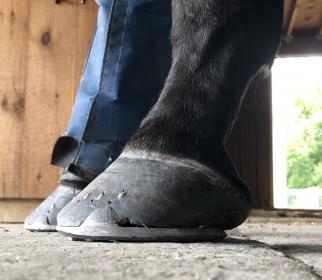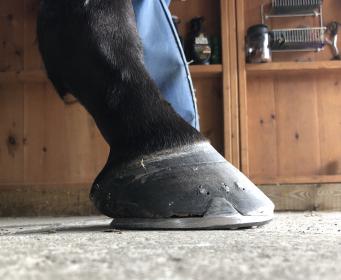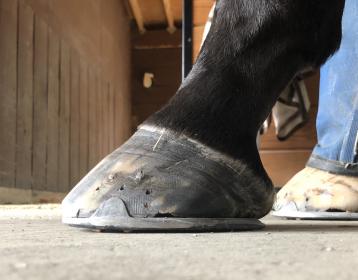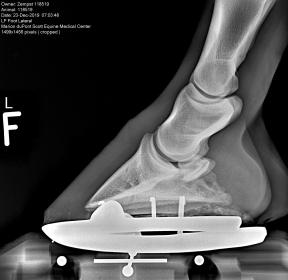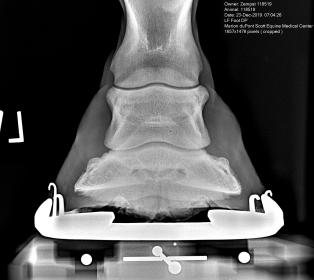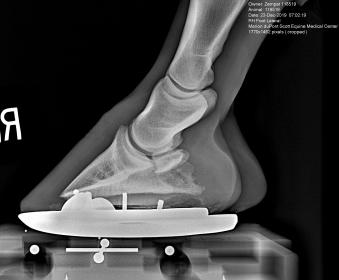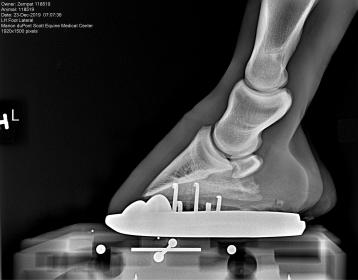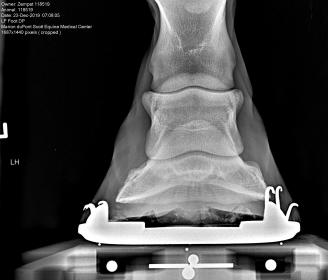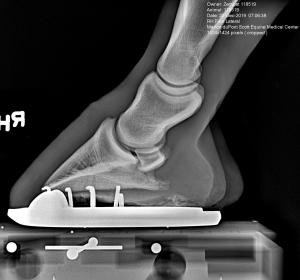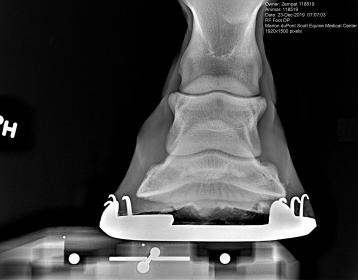I agree that A was better than B, and you may need C. B was allowing a longer, flatter slipper foot to develop. Definitely don’t want that with the weak-ish hoof walls. On a second look, A is not terrible in terms of progress being made, even if the results are still short of where you want to be.
Post #2, top photo, see the little break in the smooth line of the front hoof wall, near the top? That’s an indication of softer hoof walls, inclined to not hold up as well and especially with a longer toe. The wrinkle is also there slightly in the photo below it of the RF, but not as evident as it is at a different photo angle. With soft walls, every incremental bit of length on a flatter trajectory brings more of the wrinkling of the outer hoof wall.
It’s very important not to allow his toes to become long, because those hoof walls tend not to hold up as well and the pancake effect can move fast. Then it’s a whole other world of pulling it all back in, which is not easy with a softer wall.
Feet like that are harder to shape and manage because if they aren’t done often enough, they pancake, and if they are done too often then there isn’t enough foot to shape. And nail holes become problematic.
The second set of photos after 7 months with A look like a healthier foot, but that’s more likely due to nutrition than farriery. A was moving the foot in a better direction.
You might work with your vet & the rad machine to measure the rate hoof wall growth per month. It could be that progress with A is so slow due to the hoof growing more slowly than is normal, which can happen with softer, thinner hoof walls. Especially while the horse is processing improved nutrition.
If A and B are the choices, definitely A. Sometimes it’s hard to know when, in fairness, the farrier is doing all that can be done with what he’s got to work with. With luck the hoof health continues to improve, and your horse’s feet will be looking better. 
I spent quite a while dealing with a set of feet that looked worse than your horse’s. One of the big challenges with my TB gelding’s long, soft slipper feet was that they were growing at half the rate of normal. How do you shape the foot when it isn’t growing much after the last farrier visit? He had not had good nutrition for many months before I got him, and his body overall was not in great shape at all. But happily now his feet are much more normal, even if it took over a year of nutrition and farriery to get there. He will always tend to thin hoof walls and farrier challenges, but it isn’t the level of problem that it used to be.
My poor farrier has a hard time getting me to react when he complains that the horse’s feet are soft and tend to be thin and harder to do than the other horses. The only thing I can think is how far those feet have come in the last two years! “You should have seen them 2 years ago!” Not the sympathy he was looking for. 

